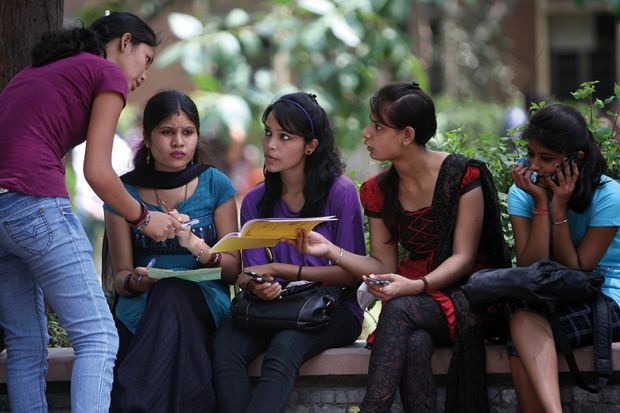India has enough potential students to plug enrolment shortfalls right around the world. But an Australian expert has warned that universities will not tap into the subcontinent’s promise by adopting a traditional recruitment mindset.
Geographer Craig Jeffrey said that a one-way traffic approach to engagement with India was very unlikely to succeed, even though the country’s nine-year-olds outnumbered Australia’s entire population. “There is a perception among India’s educational leadership that Australians are always trying to sell them something,” said Professor Jeffrey, chief executive of the Australia India Institute at the University of Melbourne.
“We need a multidimensional approach that’s not just about student recruitment and high-level research collaboration, but also about engagement and India’s capacity to provide value for Australian students.”
With a massive, growing and youthful population, India is considered an obvious market for Australian universities seeking to reduce their economic reliance on Chinese students. A highly regarded report released last month by Peter Varghese, chancellor of the University of Queensland and a former high commissioner to India, highlighted the educational export potential and offered 19 recommendations on how it could be strengthened.
Professor Jeffrey said that any engagement with India needed to borrow more from the Colombo Plan, the post-war foreign aid scheme that educated a generation of Asia-Pacific leaders, than the commercially focused mass recruitment model Australia had cultivated since the 1990s.
He said that millions of young Indians desperately needed an Australian-style higher education and universities should consider their roles as agents of social change and facilitators of international understanding. Treating India as a back-up revenue source would not only backfire; it would squander the country’s strengths in areas such as agriculture, urban planning and information technology.
Educational links needed to be collaborative with a focus on two-way mobility, Professor Jeffrey said. Australian students could benefit from specialist science and technology training in the subcontinent.
Meanwhile, Australia’s multidisciplinary strengths presented opportunities for Indians to complete their education Down Under, rather than undertaking entire courses there. “If I’m an Indian student who wants to understand pollution from the point of view of the science, the economics, the climatology, the urban planning, going to an Australian university is quite attractive,” he said.
Professor Jeffrey is the latest educationalist to highlight the need for Australia to rethink its international education approach. Frank Larkins, a former Melbourne deputy vice-chancellor, last week released a new analysis highlighting a narrowing of diversity in Australian education exports this century.
His work expanded on earlier research, which had focused exclusively on higher education, to profile changes in student flows into all of Australia’s educational sectors. He said that enrolments from eight Asia-Pacific countries had declined proportionally, with recruitment from four of them – including Indonesia – falling in absolute numbers.
Professor Larkins said that foreigners educated in Australia provided an “important bridge” to their home nations, and that the Colombo Plan had given Canberra a proactive role in sponsoring students from “under-represented, strategically important countries in the region”.
“It is timely to again consider such a sponsorship initiative,” he said.
Register to continue
Why register?
- Registration is free and only takes a moment
- Once registered, you can read 3 articles a month
- Sign up for our newsletter
Subscribe
Or subscribe for unlimited access to:
- Unlimited access to news, views, insights & reviews
- Digital editions
- Digital access to THE’s university and college rankings analysis
Already registered or a current subscriber?








